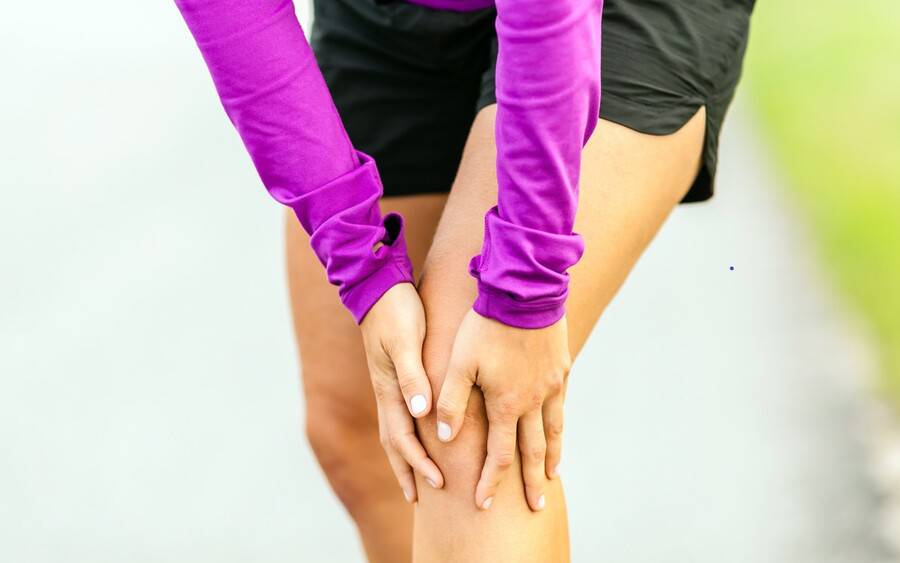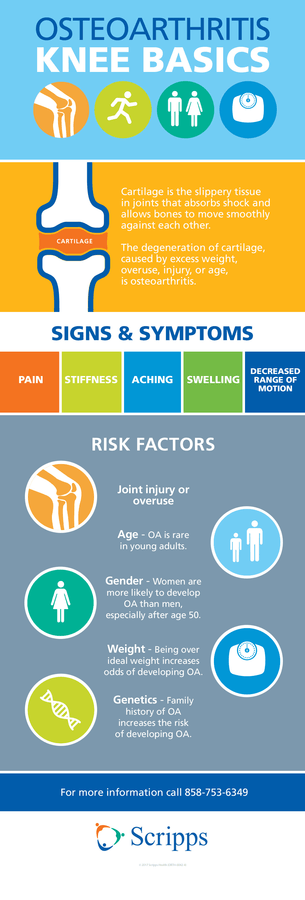Why Does My Knee Hurt?
Learn the most common types of knee pain and treatments

Learn the most common types of knee pain and treatments
Every year millions of Americans seek treatment for knee pain. Whether the pain stems from a sports injury or simple wear and tear, knee problems rank among the most common reasons for medical visits.
Medical advice and treatment for knee pain depends largely on the type of injury or disorder. Sudden injuries, long-term overuse or underlying degenerative conditions are the most common causes of knee pain. Symptoms often include pain and swelling and stiffness.
Treatment options for common knee injuries and conditions can span from rest to surgery, including knee replacement. “Because each individual patient is different, the effectiveness of treatments will vary from case to case,” says Heinz Hoenecke, MD, an orthopedic surgeon with Scripps Clinic.
Dull knee pain

Dull knee pain
Dull, achy knee pain often stems from deterioration of the knee’s cartilage.
“Runner’s knee” is a general term for several conditions that cause this type of pain around the kneecap. It’s more common among people who participate in sports that involve running and jumping.
Sports medicine specialists diagnose and treat a variety of sports injuries and conditions, including runner’s knee, which is also known as patellofemoral knee syndrome.
Pain or aching and stiffness are also symptoms of osteoarthritis, which is the most common form of arthritis in the knee. It is often referred to as a wear and tear disease and age is a major risk factor.
Over-the-counter anti-inflammatory medications can ease pain. Arthritis supplements, such as glucosamine, may also help.
In milder cases, exercises that maintain alignment of the knee may alleviate pain. These exercises may be learned from physical therapists. Alternative therapies, such as Egoscue, Pilates and yoga techniques, may help with alignment and core strengthening to relieve pain.
Reducing or avoiding certain activities can also help.
“If running, walking or hiking seem to aggravate the condition, reduce or avoid these activities until the pain symptoms resolve,” Dr. Hoenecke says. “Consider a different type of shoe or try orthotics or shoe inserts that can correct alignment and provide extra cushioning.”
If symptoms don’t improve within a few months, consult a physician or orthopedic specialist.
Sudden knee pain
A twinge in the knee upon rising from a chair. A sharp pain while descending stairs. A knee that “locks” while extended. All may be caused by a tear in the cartilage of the knee joint known as the meniscus. Any activity that causes twisting or rotating of the knee can lead to a torn meniscus.
Rest, ice and pain relievers may help with pain and give the meniscus time to heal. However, if symptoms do not improve after six weeks, the next step may be an MRI to diagnose the extent of the damage. A severe meniscus tear usually requires arthroscopic surgery to remove or repair the torn meniscus and minimize the chance of further injury.
Injury-related knee pain
A traumatic knee injury, such as from a fall or a blow, often causes sudden, sharp pain and instability of the joint.
These injuries should be evaluated by a physician immediately. Surgery may not be needed, but the physician can recommend steps to take right away to limit the damage and help the joint recover. If symptoms continue after four to six weeks, surgery may be needed.